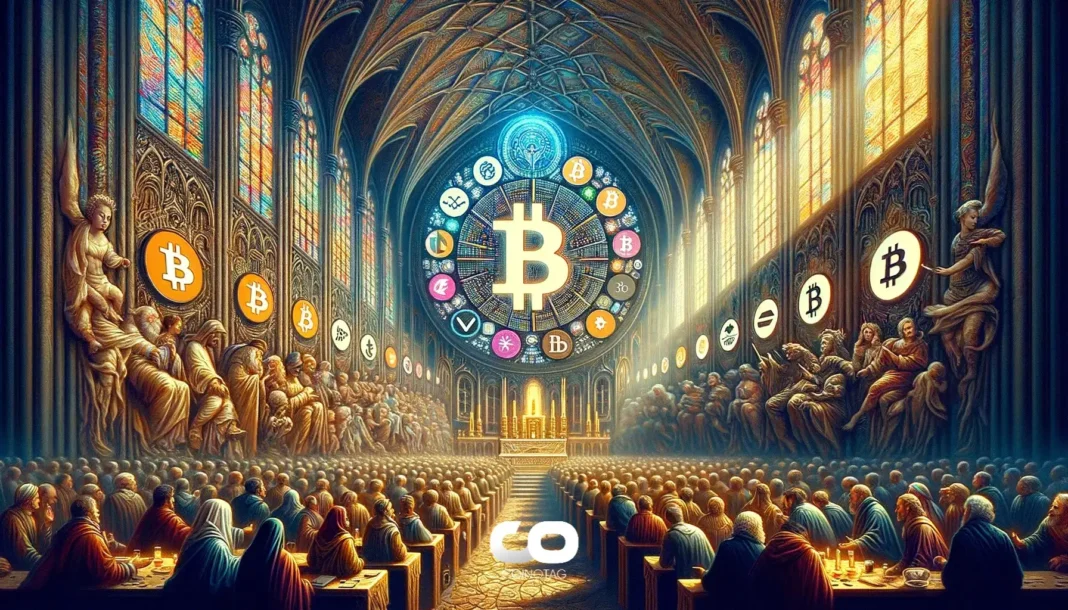-
Billionaire investor Tim Draper highlights Bitcoin as a crucial lifeboat amid the declining influence of the U.S. dollar, signaling a paradigm shift in global finance.
-
Draper suggests that Bitcoin’s traditional four-year halving cycles may soon be overshadowed by broader macroeconomic forces, particularly the weakening of fiat currencies.
-
According to COINOTAG, Draper describes Bitcoin as an “escape valve” for investors seeking protection from government mismanagement and inflationary pressures.
Tim Draper views Bitcoin as a vital hedge against the U.S. dollar’s decline, emphasizing macroeconomic trends over halving cycles in shaping Bitcoin’s future value.
Tim Draper’s Perspective: Bitcoin as a Macro Hedge Against Dollar Decline
Venture capitalist Tim Draper has long been a prominent advocate for Bitcoin, but his recent insights underscore a significant evolution in how the cryptocurrency is perceived. Draper argues that Bitcoin’s traditional price drivers—namely the four-year halving events—may lose their dominant influence as larger macroeconomic dynamics take center stage. He warns that the U.S. dollar could become obsolete within the next two decades, a development that would fundamentally alter the global monetary landscape. In this context, Bitcoin emerges as a critical hedge against the erosion of fiat currency value, offering investors a decentralized alternative to safeguard wealth amid increasing financial instability.
Halving Cycles vs. Macroeconomic Forces: A Shift in Bitcoin’s Price Drivers
Historically, Bitcoin’s halving events have been pivotal in triggering boom-bust cycles by reducing the supply of new coins entering the market. However, Draper suggests that this internal mechanism may soon be secondary to external economic pressures. As governments grapple with rising debt and inflation, the confidence in fiat currencies diminishes, potentially accelerating Bitcoin adoption independent of its supply schedule. This perspective aligns with a growing consensus among investors who now view Bitcoin as a global macro asset, influenced more by geopolitical and economic trends than by its programmed scarcity alone.
Investor Sentiment and the Growing Distrust in Centralized Systems
Draper’s characterization of Bitcoin as an “escape valve” resonates with a broader shift in investor sentiment. Increasing distrust in centralized financial institutions and government policies has driven demand for decentralized assets that offer transparency and autonomy. Bitcoin’s fixed supply and decentralized nature make it an attractive alternative during periods of economic uncertainty. This trend is reflected in rising institutional interest and public adoption, reinforcing Bitcoin’s role as a store of value beyond speculative trading.
Contrasting Views: The Debate Over Bitcoin’s Future Price Influences
While Draper emphasizes macroeconomic factors, some industry experts maintain that halving cycles still hold predictive power based on historical price patterns. These voices argue that supply shocks remain a fundamental aspect of Bitcoin’s valuation model. Nonetheless, the increasing complexity of global markets suggests that a multifaceted approach is necessary to understand Bitcoin’s trajectory. Investors are advised to consider both internal mechanisms and external economic conditions when evaluating Bitcoin’s potential.
Implications for the Cryptocurrency Market and Future Outlook
The potential obsolescence of the U.S. dollar presents both challenges and opportunities for the cryptocurrency ecosystem. As fiat currencies face pressure, Bitcoin’s appeal as a decentralized hedge is likely to strengthen, potentially driving broader adoption and integration into mainstream finance. This shift could also catalyze innovation within the crypto space, encouraging development of complementary assets and technologies that address emerging financial needs. Market participants should remain vigilant, balancing optimism with prudent risk management in this evolving landscape.
Conclusion
Tim Draper’s insights illuminate a transformative period for Bitcoin, where macroeconomic trends may redefine its value proposition beyond traditional halving cycles. As the U.S. dollar’s dominance wanes, Bitcoin’s role as a decentralized hedge against inflation and financial instability becomes increasingly significant. Investors and stakeholders should monitor these developments closely, recognizing Bitcoin’s potential to serve as a critical lifeboat in the shifting tides of global finance.






